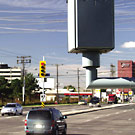3/29/2005
Study: Cameras Increase Fatal Rear End Accidents (Ontario)A December 2003 study sponsored by the Ontario, Canada government finds increase in accidents and fatal rear-end collisions from red light camera use.

Although three studies have shown a significant increase in rear-end collisions where red light cameras are used, cities using the devices are quick to dismiss such findings. Camera proponents maintain that such collisions are far less severe than angle collisions. This December 2003 study commissioned by Ontario, Canada's Ministry of Transportation shows that those rear-end collisions can be fatal. (Other studies drawing similar conclusions: Virginia, North Carolina, Australia.)
After evaluating the performance of red light cameras at 68 sites over two years, the report concluded that jurisdictions using photo enforcement experienced an overall increase in property damage accidents of 18.5 percent coupled with a 4.9 percent increase in fatal and injury rear-end collisions. Rear-end collisions involving property damage alone jumped 49.9 percent.
The study compared accident histories of intersections in Toronto, Hamilton, Ottawa, Halton, Peel and Waterloo in the pre-camera period from 1995 to 1999 and the post-camera accident history from 2000 to 2002.
The report also concludes that there was an overall reduction in serious accidents and angle collisions. A closer look at the data found in this government-sponsored report show that intersections monitored by cameras experienced, overall, a 2 percent increase in fatal and injury collisions compared to a decrease of 12.7 percent in the camera-free intersections that were used as a control group (page 21). In fact, the non-camera intersections fared better than the camera intersections in every accident category. The report's overall accident conclusions would have appeared significantly worse had the camera-free intersections been excluded from the final results.
The full text is available in a 1.5mb PDF file below.
Key Statistic:
[Before camera installation compared to after cameras were installed]
There were 4988 reported collisions at the forty-eight evaluation study sites in the before period. The average reported yearly number of collisions was 1027.6 collisions/year. In the after period, there was a total of 2366 reported collisions. The average reported yearly number of collisions was 1183.0 collisions/year. Compared to the average number of reported collisions occurring in the before period, the average yearly number of reported collisions increased 15.1 per cent in the after period.


